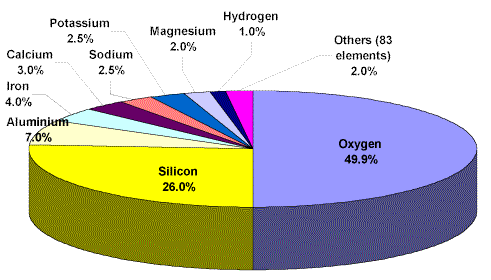Origin and Abundance of elements
The abundance of a chemical element calculated how comparatively common (or rare) the element is, or how much of the element is exist in a given environment through comparison to all other elements. Abundance might be variously measured through the mass-fraction (similar as weight fraction), or mole-fraction (fraction of atoms through numerical count, or occasionally fraction of molecules in gases), or by volume-fraction. Measurement through volume-fraction is an ordinary abundance measure in mixed gases like planetary atmospheres, and is close to molecular mole-fraction for ideal gas mixtures (that is, gas mixtures at comparatively low densities and pressures).

For instance, the mass-fraction abundance of oxygen in water is approximately 89%, since that is the fraction of water's mass that is oxygen. Though, the mole-fraction abundance of oxygen in water is only 33% since only 1 atom of 3 in water is an oxygen atom. In the universe like a whole, and in the atmospheres of gas-giant planets like Jupiter, the mass-fraction abundances of hydrogen and helium are approximately 74% and 23-25% correspondingly, when the (atomic) mole-fractions of these elements are closer to 92% and 8%. Though, because hydrogen is diatomic when helium is not, in the conditions of Jupiter's outer atmosphere, the molecular mole-fraction (fraction of total gas molecules, or fraction of atmosphere through volume) of hydrogen in the outer atmosphere of Jupiter is approximately 86%, and for helium, 13%.